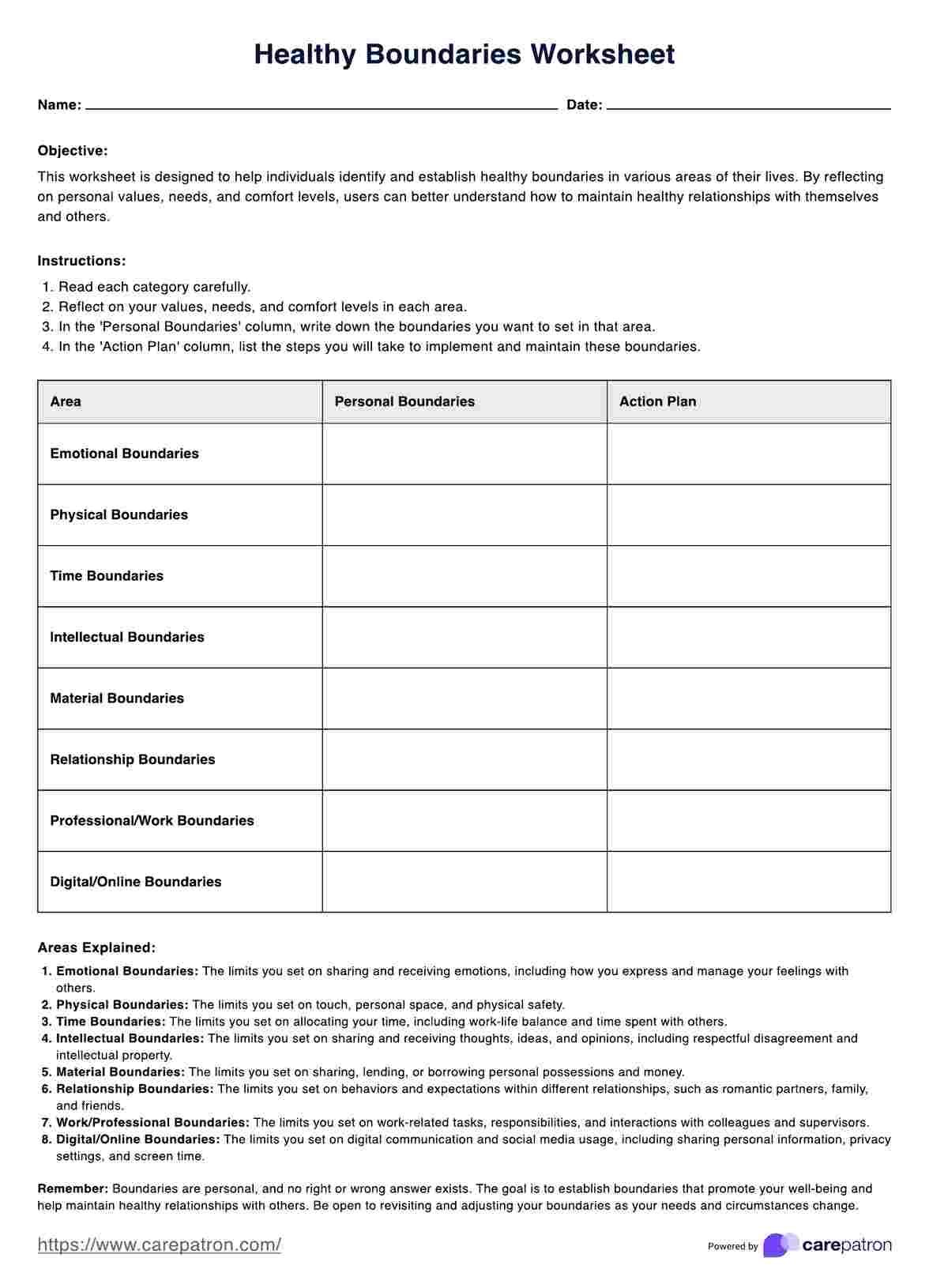A licensed therapist may start through education. Individuals learn the importance of setting and maintaining healthy limits. This can be done by discussing the concept of personal space and the need to prioritize one's own needs and feelings. Practitioners can also use role-playing exercises to help individuals practice setting boundaries in different scenarios, such as saying "no" to an unwanted request or setting limits with a friend or family member.

Healthy Boundaries Worksheet
Build healthy relationships and set healthy boundaries with our comprehensive Healthy Boundaries Worksheet. Download for free!
Healthy Boundaries Worksheet Template
Commonly asked questions
An example of setting boundaries is when an individual decides to limit their social media use to a specific time each day to maintain a healthy work-life balance. This boundary helps them avoid the constant distraction of social media and allows them to focus on other aspects of their life.
Examples of violating boundaries include pushing someone to talk about a traumatic event they are not ready to discuss or showing up uninvited to someone's home, putting them in an uncomfortable position. These actions can be perceived as invasive, and one may feel resentful.
EHR and practice management software
Get started for free
*No credit card required
Free
$0/usd
Unlimited clients
Telehealth
1GB of storage
Client portal text
Automated billing and online payments











